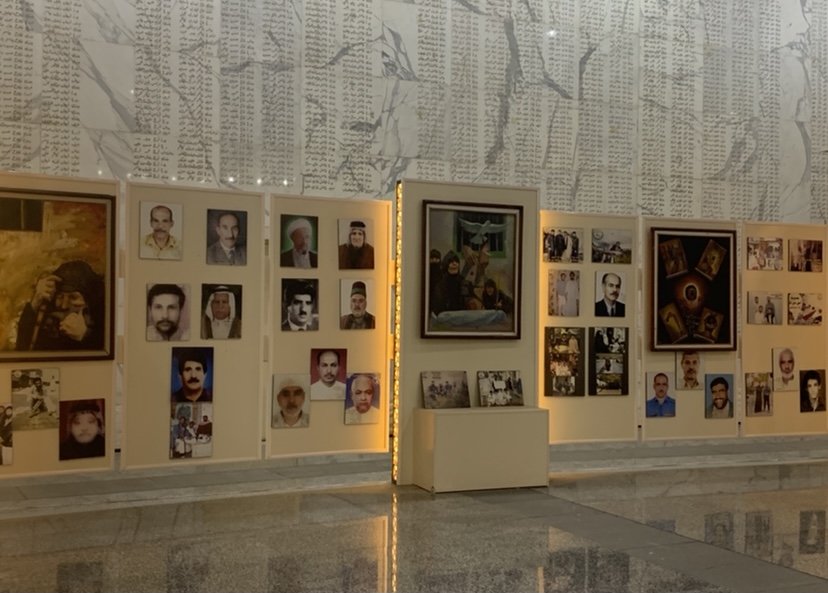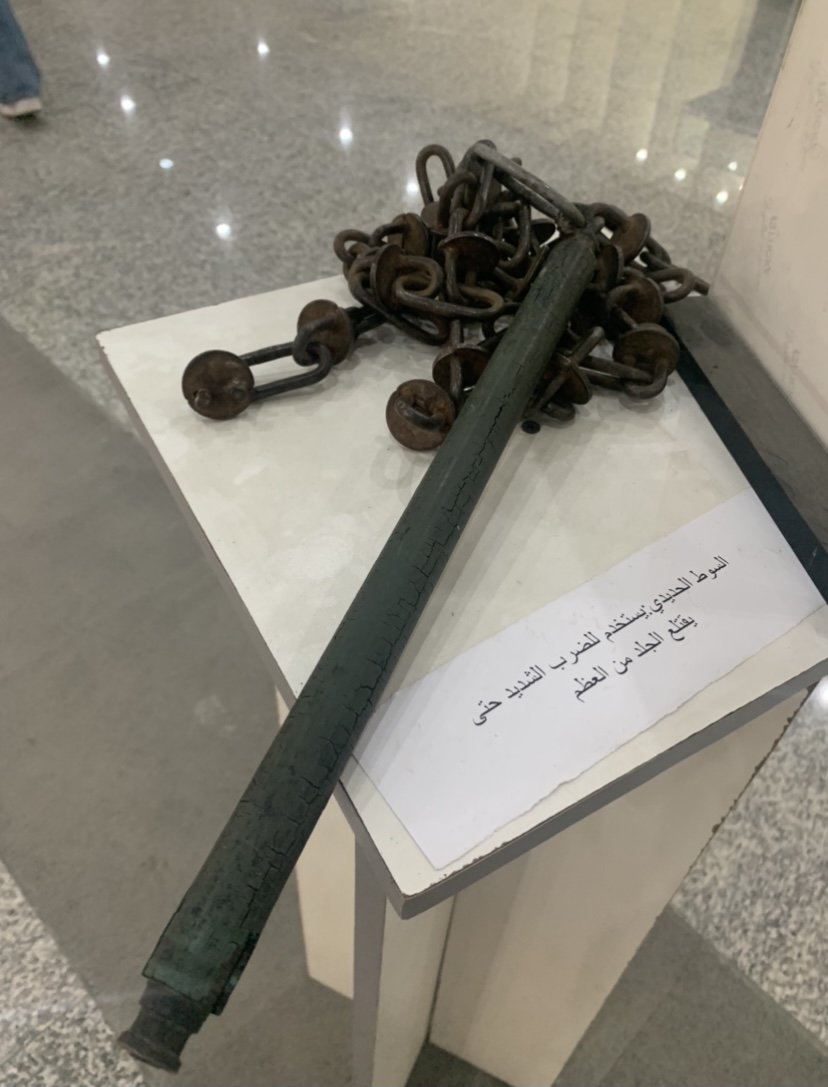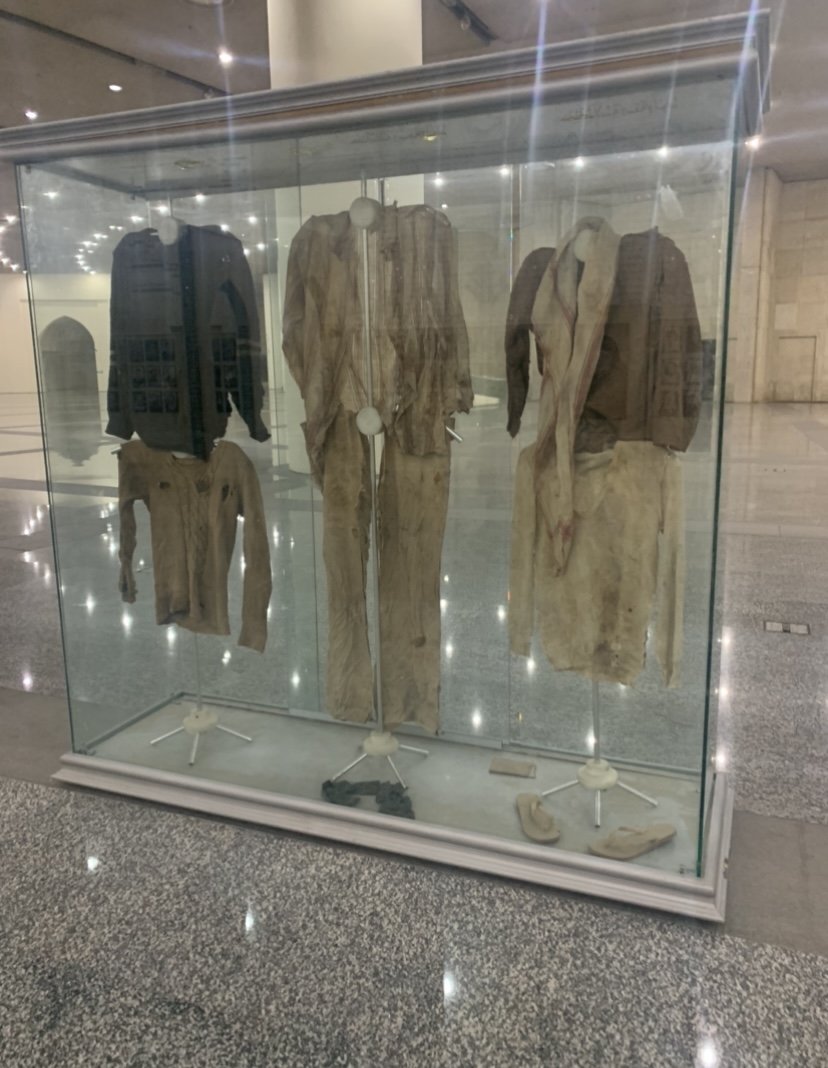Intersecting Roots: Testaments of Anti-Americanism in Amman
Today, Saddam Hussein’s popularity in Amman is still observed in a remarkable fashion. On my first visit to the Friday Market in downtown Amman, during the drive, a photo of Saddam Hussein dangled from the rear-view mirror in my taxi with Lynyrd Skynyrd bellowing on the aux. To my right, a picture of Hussein was bound to an air freshener, while out the window, cars passed with his picture readily plastered on their bumpers as we passed streets lined with Western fast food chains.
Although the celebration of Saddam Hussein’s heroic persona was not shared by all, it did produce a curiosity in me. How are such dynamics present in a politically moderate country such as Jordan, especially given the country’s alliance with the United States and the embrace of “regular Western culture” by many Jordanians?
At the Friday Market, surrounded by clusters of contemporary American brands stacked on makeshift tables and racks, a local basta (fruit market owner) urged my friends and I to disguise our American identities and go by any other English-speaking country’s nationality. He also voiced his own negative opinions of the United States.
The Friday Market in downtown Amman is peppered with clusters of American and European brands, like an outdoor thrift store. And only a ten minute walk away is the heart of Amman, including gift shops and outdoor fruit, veggie and spice markets like the one in this image.
US-Jordanian Relations
The US presence in the Middle East is conventionally understood as a strategic approach designed not only to secure access to the region’s rich supply of oil, but also to prevent hostility in the region because of its geopolitical and geoeconomic significance. On a larger scale, supporters claim that US hegemony prevents international aggression and terrorism. Yet, US foreign policy strategies have been repeatedly misapplied, distracting from the sometimes catastrophic risks that US engagement itself presents.
The US sponsors and contributes a great portion of military and economic aid to many countries in the region, including Jordan, one of its primary allies. Key US interests and policy priorities in the region include securitization. In the realm of foreign policy, Jordan can be considered a small state. This is because Jordan’s power is small within the political system and it cannot obtain security on its own, but rather is wholly dependent on bigger powers, like the United States, to achieve security. A part of this security is obtained through international aid. Jordan pays back the economic and military assistance they receive through political cooperation. These relations have maintained stability in Jordan, even as it borders war-ridden countries.
Jordan’s stance in the Iran-Iraq war (1980-1988) symbolizes the smallness of Jordan in the arena of foreign policy. Jordan was sympathetic with Iraq during the war. This position left Jordan defenseless in the foreign policy arena, as it lost its ties with the US and many of the Gulf countries that were supporting Jordan financially. Almost half a million Jordanians who were working in the Gulf at the time were terminated from their jobs and forced to return home. Because of this, Jordanian foreign policy needed to shift in order to foster a new compatibility with regional and international players. Jordan succumbed to foreign pressure and shifted its stance towards Iraq, becoming increasingly critical of the regime in the mid-1990s.
Anti-American Sentiments
US involvement is not always well-received in the region. Jordan harbors a considerable amount of anti-Americanism, which was emphasized through the pictures of Saddam Hussein that I witnessed during my time in the country. The use of his likeness can be interpreted as a sign of what happens when foreign endorsements and policies are seen as over-stepping into local democratic processes, thus sparking public outrage.
Despite the pervasive attitude in Amman that a better life can be found in the ‘western’ world, “anti-American” and “anti-‘western’” symbols are equally pervasive. The picture of Saddam Hussein serves as one of the most popular symbols of “anti-Americanism” in Amman. His image can be seen across the city every day in gift shops and on bumper stickers, air fresheners, keychains, and pictures hung from cars. I saw Hussein’s face frequently in Amman, especially in taxis and on the walls of buildings.
An image I saw frequently in many places in Amman. From bumper stickers in taxis to images plastered on air fresheners, Saddam Hussein’s face is commonly found.
In fact, many Arabs still praise Saddam Hussein, despite the fact that he was a violent dictator. The gallery of atrocities included at the end of this article illustrates the brutality of his reign. At the same time, he also came to symbolize a fearless leader in the region - a man unafraid of standing up against the West.
The story of Saddam’s relationship with the US in particular is complicated by the fact that he was once a US ally, only to have the US invade Iraq twice - first in 1991 after Iraq’s invasion of Kuwait, and then again in 2003 when the Bush Administration launched a war based on flawed intelligence claiming that Iraq possessed weapons of mass destruction.
In the aftermath of the execution of Saddam Hussein in 2006, many Arabs, particularly Palestinians, were angered by his death. NPR reported that many Palestinians empathized with Hussein and declared him a hero for standing up to the US and Israel in support of their cause against the Israeli occupation. During the 1990-1991 Gulf War, Iraq carried out a missile campaign against Israel, hoping to provoke them into retaliating. Prior to his execution, Saddam Hussein reaffirmed that “Palestine is Arab” and defiantly urged Arabs to fight the “American invaders.” While he undoubtedly remains controversial, some supporters and Saddam enthusiasts considered him a martyr for defying the West and supporting the Palestinian cause.
A photograph of a watermarked 1986 Saddam Hussein 25 Dinar bill.
These “anti-American” sentiments (for a lack of a better term) call into question who or what these individuals in the region are defending when they are holding pictures of Saddam Hussein or when, like the fruit-market owner, they urge American students to disguise their American identities. In the next article I will dig further into this question.
A gallery of atrocities committed during the Saddam Hussein era. The images are from the Al-Shaheed Monument (Martyr’s Memorial) located in Baghdad, a monument that serves as a memorial for many of the victims who lost their lives as a result of his violence.










![“Bones-breaking device that [was] used in the general security directorate against the prisoners to make them confess.”](https://images.squarespace-cdn.com/content/v1/5f99db38cdebdd00c87f5e28/1645143459500-XSB0MWPO33E3VSDYKFWN/IMG_1631.jpg)


